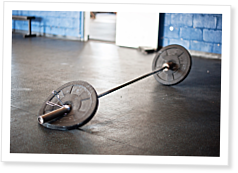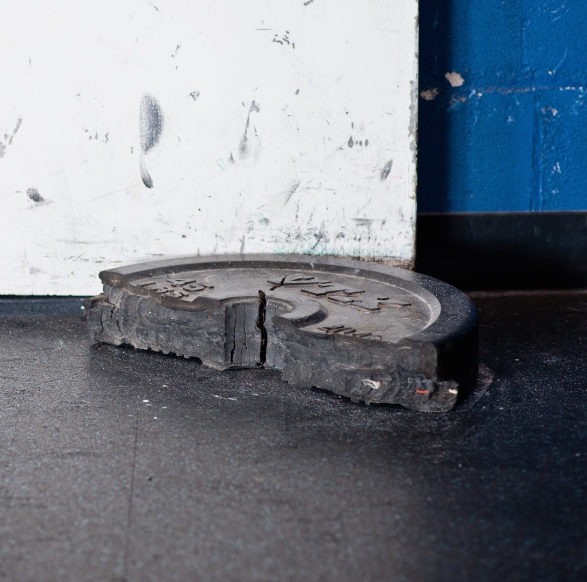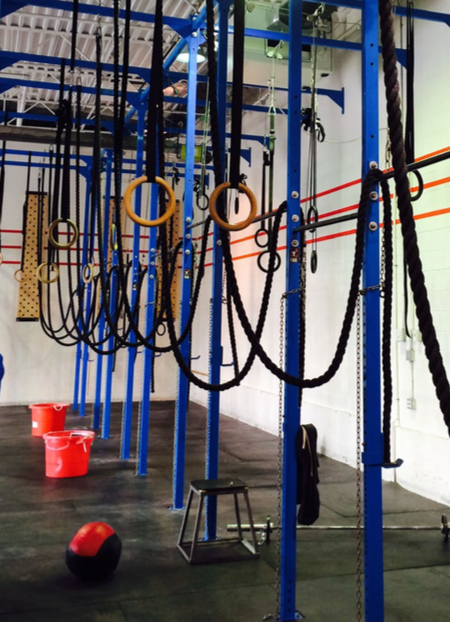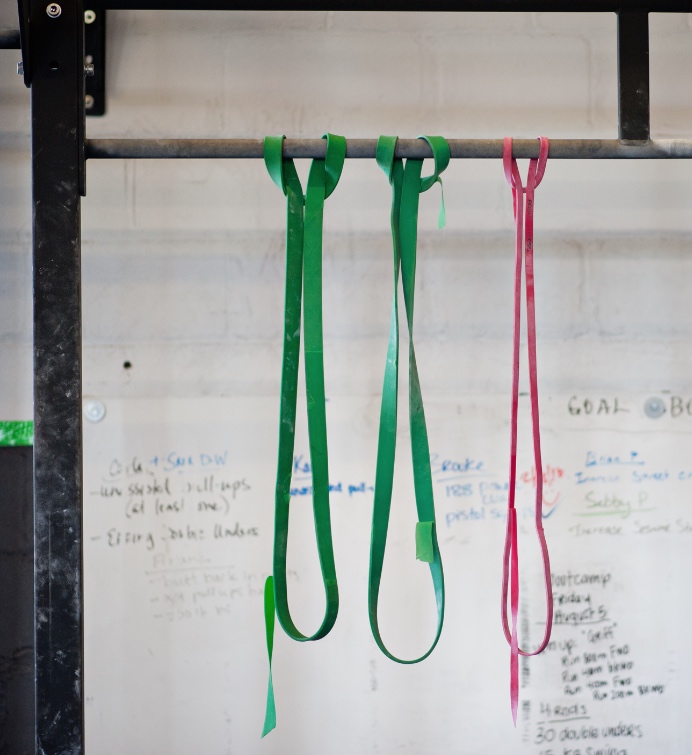
Affiliate owners discuss budgeting for replacement gear and making the new equipment last.
A 45-lb. plate can be a great doorstop.
Of course, it’s a better fitness tool, but what else can you do with a broken bumper?
The business of fitness is tough work, and CrossFit athletes are tough on implements. As eager as affiliate owners are for their clients’ PRs, progress inevitably comes with broken weights, snapped skipping ropes and busted rowers.
“Things are gonna break,” said Justin Riley, owner of CrossFit East Sacramento in California. “It’s part of being a business owner that you’re going to have to fix things and replace things and do maintenance.”
Equipment shelf life isn’t always the first thing affiliate owners think of after they open their gyms, but according to Jeremy Thiel, owner of CrossFit Central in Austin, Texas, it’s something they should consider from the start.
“It’s very hard to know exactly when equipment’s gonna go out,” he said.
With two locations and around 700 members total, Thiel has seen his fair share of damaged goods. Since he opened CrossFit Central in 2005, he’s lost four rowers due to damage and wear and tear. He’s purchased six barbells in the last six months alone, and every six months or so he orders a new batch of bands. These costs are obviously in addition to regular monthly expenses such as utilities, payroll or even chalk, and smart affiliate owners set a nest egg aside to cushion the blow, he said. For CrossFit Central, that’s 3 percent of monthly revenue “so we’re not caught off guard and we have that money available to reinvest,” Thiel said.
The figure was the result of some third-party number crunching: The percentage is based off membership base and past expenses that were closely analyzed by an accountant.
“It’s really important for boxes to make sure they have bookkeepers and accountants that they’re working with,” he said. “As an affiliate owner, you wear a lot of different hats, and managing your budgets and accounting, that’s probably not your expertise.”
 Perhaps also useful for burden runs, but not much else.
Perhaps also useful for burden runs, but not much else.
Kevin Montford, owner of CrossFit SoCo in Colorado Springs, Colorado, does things a little differently, replacing broken equipment and buying new things once a year with funds raised by an annual equipment fee. Each April, CrossFit SoCo members pay US$50 each toward replacement and new equipment (families pay only one $50 fee). The gym has around 350 members, and the equipment fee brings in approximately $15,000 each year.
Montford came up with the idea in 2013, when, after four years of affiliation, he found that replacing equipment was eating into paychecks.
“(The impact on the budget) was big,” he said. “People are pretty aggressive on equipment, and we were constantly breaking bumper plates and replacing medicine balls and slam balls that were busting.”
The key to the program’s success, he said, is including members in the purchasing process. As April approaches, Montford takes stock of what needs replacing and writes it on the whiteboard with a cost breakdown for each piece of equipment. After replacement equipment is accounted for, members vote on what they’d like to buy with the rest of the money. Past votes have yielded SkiErgs, rowers and specialty gymnastics equipment.
“No one’s ever complained about it; it’s been great,” he said. “They’re the ones who are going to benefit from it.”
At CrossFit Fort Bragg/Evolution Athletics, Daniel Skidmore and Chris McNamara take a less direct approach, rolling the cost of equipment into regular membership prices.
“I look at it as (equipment fees) are part of the encompassing package in your monthly membership,” Skidmore said. “You’re paying to keep it nice.”
Tender Loving and Care
The best way to deal with broken equipment, McNamara said, is to minimize breakage in the first place by buying quality equipment—and then maintaining it.
“Spend a little bit more money up front in the hopes of getting a long run out of it and maximizing your total time with it,” he said.
Brett Marshall, owner of CrossFit Calgary in Alberta, Canada, agreed. Over a span of six years, CrossFit Calgary ate through several climbing ropes, each set made of different material, before switching to a more expensive—and more durable—synthetic rope that didn’t fray down to a shoelace after regular use.
 At CrossFit Calgary, more expensive synthetic climbing ropes have proven to be more durable.
At CrossFit Calgary, more expensive synthetic climbing ropes have proven to be more durable.
“We’ve been over a year now with these new ones ... and they are essentially undamaged,” he said, “which, for the amount of rope climbing that we do, normally there would have been extensive fraying going on by this point.”
McNamara stressed that aside from purchasing high-quality equipment in the first place, the best thing affiliate owners can do is take care of it.
“Don’t forget to start out with a maintenance schedule from the very start so you’re being more proactive with your equipment plan versus reactive,” he said.
CrossFit Fort Bragg/Evolution Athletics adheres to a maintenance plan divided into one-, two- and three-month intervals, with duties ranging from lubricating the chains on the rowers to inspecting pull-up rigs for rust damage.
“If you see something (broken), do something about it,” Skidmore added. “And when something needs (maintenance), just go ahead and check everything.”
House Rules
It’s not just coaching staff who should do the maintaining, though. A huge factor in how long equipment lasts, Marshall said, is how it’s treated. For that reason, CrossFit Calgary has a few house rules.
“Our house rule is pretty simple,” he said. “It says, ‘Don’t drop things that shouldn’t be dropped.’”
 Pull-up bands fray with regular use, and gym owners should budget for replacement.
Pull-up bands fray with regular use, and gym owners should budget for replacement.
Light barbells tend to scatter when dropped, careening into other equipment—or people—and light bumper plates have a tendency to crack. Even kettlebells can crack when dropped on end from a height.
“We don’t freak out if people are dropping things here and there (because) they’re fatigued and if the intensity’s very high, but as a general rule, our members are instructed in terms of how to care for the equipment, which definitely doesn’t involve dropping it,” Marshall said.
But it’s not just about rules and burpee penalties. It’s about setting “a culture of respecting the equipment,” Riley said, and that starts with the staff.
Fresh off a stuffy gig as a trainer at a country club at which he had to tuck in his shirt and take care not to leave so much as a scuff on the floor, Riley opened CrossFit East Sacramento in 2008. He and his business partner “were so excited to be out of there that we ... started this gym with sort of a thrasher mentality,” he said.
Soon he had more broken 10-lb. plates than whole ones, and the sheetrock walls were pocked with holes punched by athletes’ heels during careless handstand push-ups.
“That got old,” he said. “I think initially we didn’t set a culture of having a lot of respect for the facility, and that’s something we had to go back and do later.”
Still, at the end of the day, CrossFit affiliates are about fitness first. Do your best to prevent and save for damage, Riley said, but remember that a few broken plates are sometimes the price of progress.
“These facilities get used hard, and things will break,” he said. “Just understand that it’s part of being an affiliate owner. It’s really important that you are upkeeping the facility because people pay a lot of money to come into a place like this. Lead by example, and in a polite way, with good leadership, make sure you set a precedent for respecting the gym’s equipment.”
About the Author: Brittney Saline contributes to the CrossFit Journal and the CrossFit Games website, and she trains at CrossFit St. Paul. To contact her, visit brittneysaline.com.
Photo credits (in order): Wendy Nielsen, Brett Marshall, Wendy Nielsen
No comments:
Post a Comment